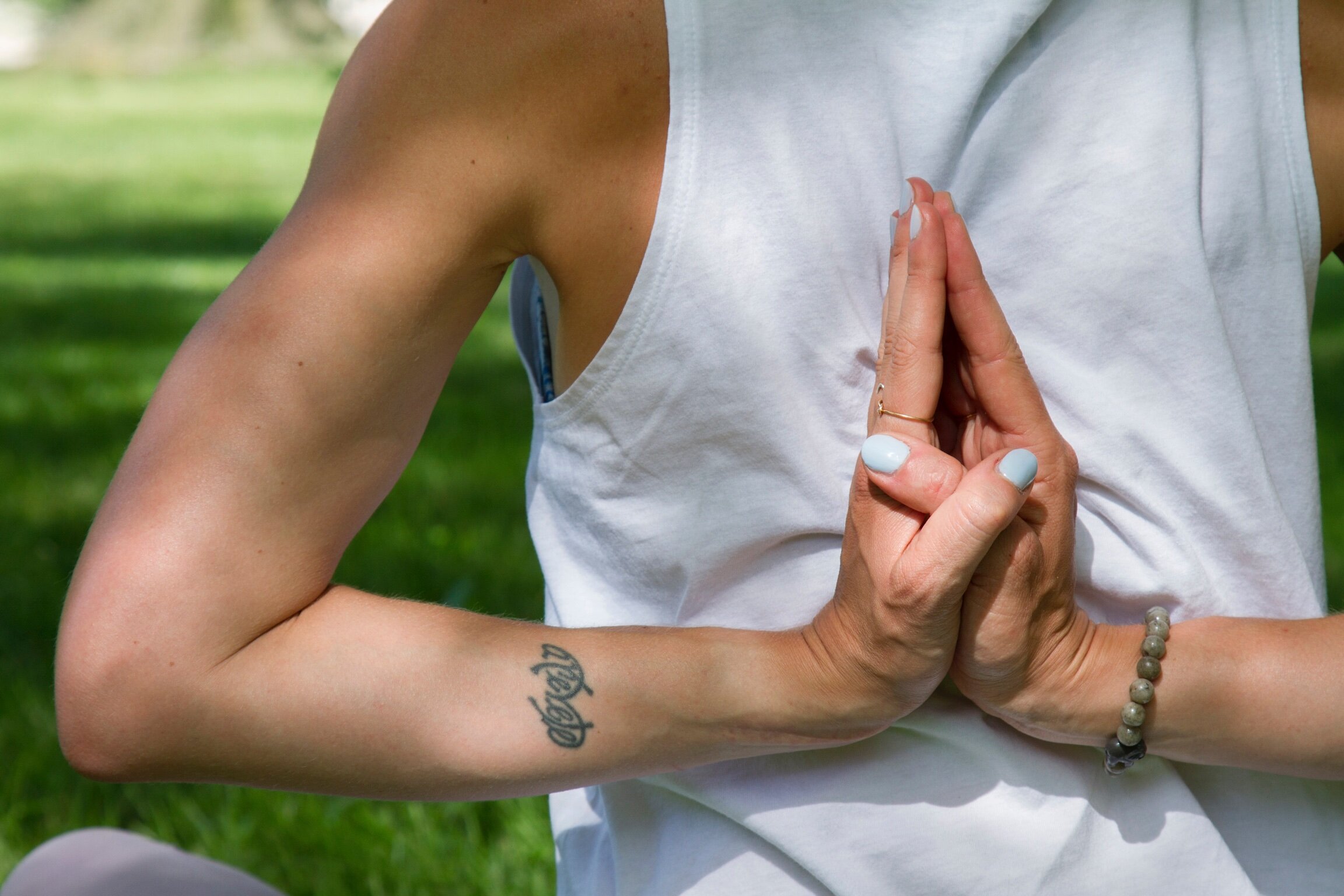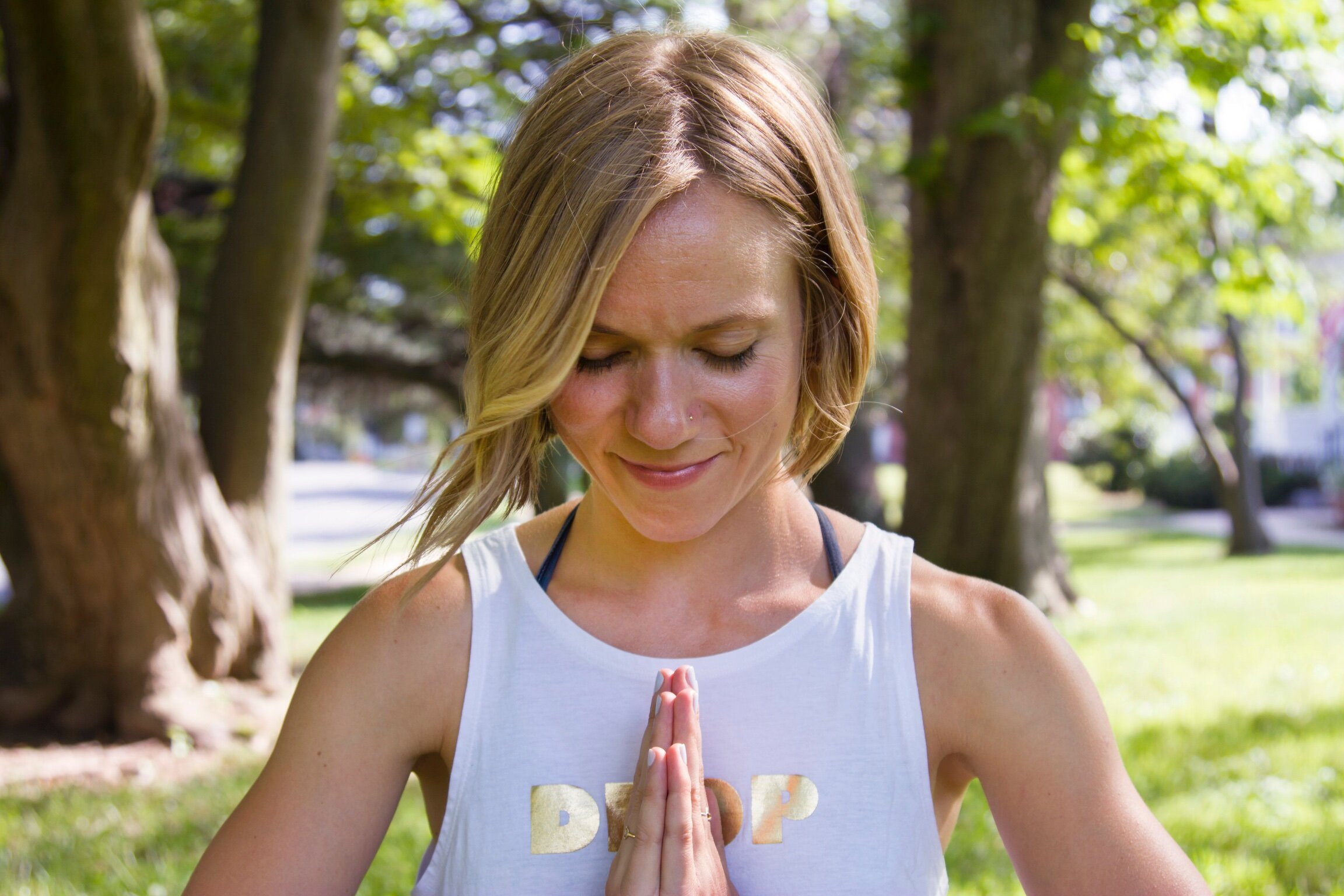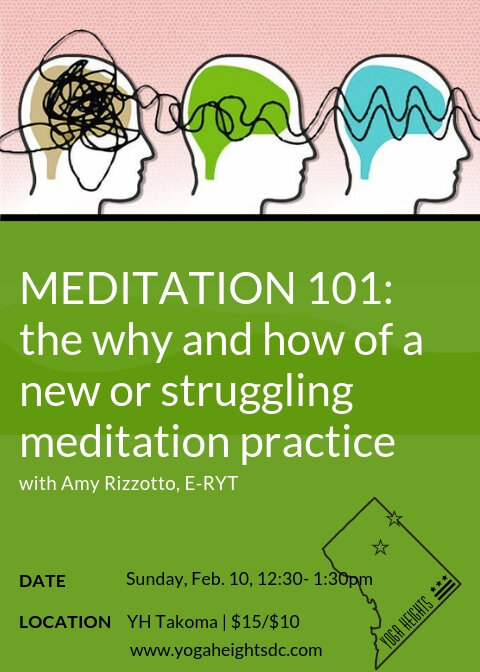Meditation 101
By Amy RizottoWhat is meditation?To borrow a phrase from one of my favorite meditation teachers Tara Brach, when it comes down to it meditation is about creating “the sacred pause.” The main idea is to use different objects to focus one’s attention. It’s about bringing the mind back to the here and now, as opposed to letting the mind drift - over and over and over. With time and practice your ability to keep the mind anchored on one object gets stronger, just like any muscle when you train it properly.There are many different objects we can use to help harness our attention. For example:
WalkingIntentional movementBreathingMala beadsMantrasCountingVisualizationsChakrasSensesEmotions
 Why Meditate?In a word, Science. Meditation has been scientifically proven to increase gray matter in the hippocampus - a part of the brain responsible for learning, spatial navigation, and memory. It also reduces gray matter in the amygdala - the brain’s “fight or flight” center, linking it to a decrease in anxiety and stress levels. Moreover, it thickens the pre-frontal cortex, which is responsible for higher order brain functions like awareness, concentration, and decision-making. Lastly, it weakens the “functional connectivity” between the amygdala and the rest of the brain and strengthens connections between areas associated with attention and concentration. Beyond brain chemistry, meditation improves “brain plasticity,” or the ability to disengage old neural pathways and reinforce new, healthy ones. It “rewires” the brain so that our more primal responses to stress seem to be superseded by more thoughtful ones - aka it creates space for that “sacred pause,” making us on the whole less reactive. Plus, it helps you live a longer healthier life by reducing stress and the risk for heart disease and certain cancers. Studies also show that meditation reduces inflammation in the body and improves overall sense of well-being.Where to start?
Why Meditate?In a word, Science. Meditation has been scientifically proven to increase gray matter in the hippocampus - a part of the brain responsible for learning, spatial navigation, and memory. It also reduces gray matter in the amygdala - the brain’s “fight or flight” center, linking it to a decrease in anxiety and stress levels. Moreover, it thickens the pre-frontal cortex, which is responsible for higher order brain functions like awareness, concentration, and decision-making. Lastly, it weakens the “functional connectivity” between the amygdala and the rest of the brain and strengthens connections between areas associated with attention and concentration. Beyond brain chemistry, meditation improves “brain plasticity,” or the ability to disengage old neural pathways and reinforce new, healthy ones. It “rewires” the brain so that our more primal responses to stress seem to be superseded by more thoughtful ones - aka it creates space for that “sacred pause,” making us on the whole less reactive. Plus, it helps you live a longer healthier life by reducing stress and the risk for heart disease and certain cancers. Studies also show that meditation reduces inflammation in the body and improves overall sense of well-being.Where to start? While cell phones and meditation don’t necessarily go together like peanut butter and jelly, apps are a great way to get started. Insight Timer, Calm, and Headspace all offer free guided meditations. Start with 5-10 minutes per weekday - make it part of your morning or evening routine - and work your way up. Don’t get discouraged if you miss a day (or ten) - just get back to it as soon as you notice you’ve been derailed. Beating yourself up over not meditating defeats the purpose. How can you deepen your meditation practice?The three keys are: consistency, frequency, and duration.You might also explore books and podcasts from amazing meditation teachers like Tara Brach, Thich Nhat Hanh, and Jon Kabat-Zinn.Interested in learning more and trying out different ways to meditate? I’m leading a Meditation 101 workshop at YH Takoma on Sunday, February 3rd from 12:30-1:30pm. All levels of experience - especially total novices - are welcome. Learn more and sign up here.
While cell phones and meditation don’t necessarily go together like peanut butter and jelly, apps are a great way to get started. Insight Timer, Calm, and Headspace all offer free guided meditations. Start with 5-10 minutes per weekday - make it part of your morning or evening routine - and work your way up. Don’t get discouraged if you miss a day (or ten) - just get back to it as soon as you notice you’ve been derailed. Beating yourself up over not meditating defeats the purpose. How can you deepen your meditation practice?The three keys are: consistency, frequency, and duration.You might also explore books and podcasts from amazing meditation teachers like Tara Brach, Thich Nhat Hanh, and Jon Kabat-Zinn.Interested in learning more and trying out different ways to meditate? I’m leading a Meditation 101 workshop at YH Takoma on Sunday, February 3rd from 12:30-1:30pm. All levels of experience - especially total novices - are welcome. Learn more and sign up here.

